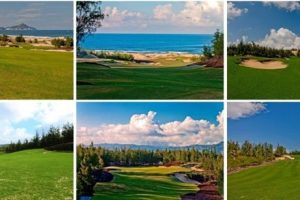Hanoi (VNA) – The northern province of Bac Giang will bring its strengths into full play to make tourism a major economic contributor and welcome about 3-3.5 million tourist arrivals each year by 2025, according to Deputy Director of the provincial Department of Culture, Sports and Tourism Nguyen Trong Bac.
The province plans to attract investment into local tourist sites with more diverse investment forms for investors. It will focus more on preserving and restoring traditional festivals and cultural activities as well as craft villages, while protecting and upgrading local relics as part of efforts to foster the industry’s sustainable development.
It will also look to boost culture and religion-based tourism and make the most of cultural heritages such as “Quan Ho” (love duets), “Ca Tru” (ceremonial singing), “Chau Van” (ritual singing), “Then” singing, and folk music from local ethnic minority groups, to boost tourism.
Bac Giang will develop infrastructure and enhance service quality at tourist and historic relic sites, offering more unique and appealing tourism products in various areas, from culture, religion, history, and culture to eco-tourism, leisure, and entertainment. It plans to ramp up tourism promotions and create tours linked with popular destinations in other cities and provinces.
The province is paying greater attention to developing and training a high-quality workforce and accelerating the use of technologies in the sector. It has built a smart tourism portal and a digital tourism map, and manages an online database of local lodging service providers.
Bac Giang has a long history and rich culture and is blessed with abundant natural resources.
It is home to Buddhist Sutra Woodblocks at Vinh Nghiem Pagoda, recognised as a world documentary heritage. The province, along with some other northern localities, is home to several UNESCO world intangible heritage practices, such as “Quan Ho”, “Ca Tru”, the Beliefs in the Mother Goddesses of Three Realms, and the Practices of Then by the Tay, Nung, and Thai ethnic minority groups.
The province is also the birthplace of Truc Lam Yen Tu Zen Buddhism. Scientists have found a connection between Vinh Nghiem Pagoda in Yen Dung district, which was built in the 11th century, and a series of ruined pagodas, temples, and towers in the west of the Yen Tu range. The mountain range is where King-Monk Tran Nhan Tong began studying Buddhism in 1293 after handing over his throne to his son.
There is also a connection between Bac Giang’s relics and those of the Tran Dynasty (1225-1400) in Dong Trieu, Quang Ninh province, and the Thanh Mai – Con Son – Kiep Bac historical and cultural site in Hai Duong province.
Bac Giang has a total of 2,237 historic and cultural sites, four of which have been named special national relics, 101 national relics, and 604 provincially-recognised relics. It is also home to three national treasures, 12 national intangible cultural heritages, and more than 700 traditional festivals.
Many of its sites and villages hold great potential for tourism development, such as Dong Cao in Son Dong district, Cam Son and Khuon Than Lakes in Luc Ngan district, and villages of ancient “Quan Ho” singing on the left bank of the Cau River. It is blessed with various specialty agricultural products, for example Luc Ngan’s “thieu” lychees, oranges, and pomelos, Yen The’s Ven village’s tea and hill chicken; and Tan Yen’s Nui Danh codonopsis javanica (a type of plant).
Over recent years, the province has invested heavily in developing infrastructure and restoring historic and cultural relics to boost tourism. Notable projects include the construction of the Yen Dung Golf Course and the Tay Yen Tu eco-tourism and religion complex, and the restoration of Xuong Giang Temple and Truc Lam Phuong Hoang Monastery.
The number of tourist arrivals to Bac Giang has grown by more than 20 percent annually over the last several years./.



